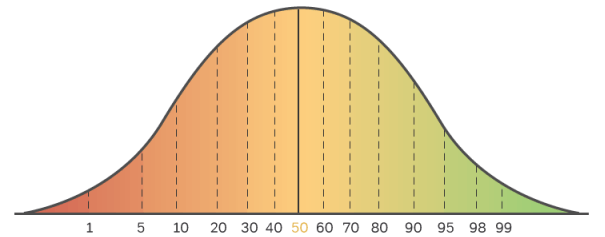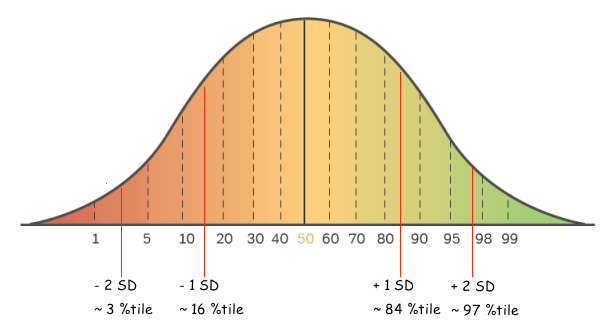The SAT test standard deviation values for 2015 is 116 points for Critical Reading, 120 points for Math, and 115 points for Writing. More 2015 standard deviation values based on different groups of students (think: race, gender, grade in school, etc.) can be found in this report by the College Board. Unfortunately, the new SAT test standard deviation values for the March SAT aren’t released; in fact, the College Board probably won’t release new SAT test standard deviation values and other test statistics until the end of the year.
Okay, that’s cool I guess…but what is SAT test standard deviation and why do I need to know this?
Standard deviation is a measure of variation or differences between data points in a data set. It is a measurement that shows how spread out the data is in relation to the mean. A big standard deviation means that data is really spread out while a small standard deviation means that the data is grouped closer to the mean (and the way we know if standard deviation is big or small is by comparing two data sets). Standard deviation is really important on the SAT because it helps create the SAT scoring system and it also helps check that the scoring system is fair.
If you’ve taken the SAT or the PSAT, you’ll notice that your report always has a percentile with your score, which shows how well you did in comparison to the other students that took the test. This is because the SAT is the type of standardized test that creates its scoring based on trends found in general populations, which can be statistically represented by a bell curve:

In a general population, data points that are one standard deviation higher than the mean tend to be at the 84th percentile mark and values that are one standard deviation lower than the mean tend to be at 16th percentile mark. Check out the following image for what data points two standard deviations away from the mean look like:

To match these statistical trends, the SAT test makers then made a scoring system that set the average or mean score to 500 (this is the score at the 50th percentile mark) and the standard deviation to 100 points for each section. This means that ideally, students that are scoring at the 84th percentile would get a score of 600 and students that are scoring even higher at 97th would get 700. With a lot of testing and research, the test makers can make sure that the SAT tests have the right questions to achieve these goals.
When we look at the actual SAT Test standard deviation values, we can confirm they’re not too far off from the 100-point standard deviation goal, which is a relief. A smaller or bigger standard deviation means that the results don’t match how the general population is predicted to perform. This could raise flags about the questions. For example, a smaller standard deviation could mean that everyone was scoring similarly because the test was too easy or too hard. If it was bigger, it might mean that it’s testing specific knowledge that some groups of students aren’t aware of, but others are, which wouldn’t be fair.
The tl;dr version about SAT test standard deviation
If the previous section was just a bit too much statistics for you (and it shouldn’t be because standard deviation actually comes up on the SAT!), the important thing to know about SAT test standard deviation is that it’s one way to make sure that the SAT is being scored fairly. If the variation in real SAT test scores is measured by standard deviations of approximately 100 points, give or take 10 or 20 points, then we can confirm that the test is fairly scored and that it serves the purpose it’s supposed to serve.






Leave a Reply